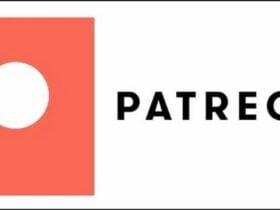MANCHESTER, N.H. — Back when Southern New Hampshire University changed into a small regional group with a modest online presence, Paul LeBlanc, the university’s president, called an assembly with his online crew. The group watched as LeBlanc opened the University of Phoenix’s internet site, crammed in a request-for-statistics form, and placed his cellular phone at the table. A few moments later, the telephone rang. It becomes a Phoenix representative calling, equipped to help the president join an online diploma program.
LeBlanc wanted to show his crew what they were up in opposition to. He understood that “velocity-to-lead” instances could grow paramount in online admissions. Calling capability students 10, 15, or half-hour wasn’t precise enough once they put up an inquiry. “We’re no longer wherein we want to be,” he stated. That was over a decade ago. SNHU representatives now aim to name prospective students so speedy that they don’t have time to click away from the college website. The university commonly returns 98 percent of new lead calls in under 3 mins.
Speed and efficiency have helped SNHU grow its online enrollment from three 000 students in 2003 to around 132,000 college students nowadays. But another magic element that has propelled SNHU- is hundreds of thousands of dollars spent on advertising, marketing, and student recruitment. As opposition for college kids increases, SNHU faces options to keep developing: spend even more or innovate. With advertising paying extra than $139 million final yr, LeBlanc is trying the latter.
An Ambitious Growth Strategy
During his 16-yr presidency, LeBlanc has transformed SNHU from a sleepy regional college to a slick online behemoth. He is candid that for-earnings establishments and Phoenix helped pave the way. “We found out plenty from the early days of Phoenix — a way to be extra scholar-centric, a way to be greater customer support-oriented, the way to improve our processes and use facts better,” he says. “All matters that higher ed, not distinctly, [was] in no way correct at.” At its peak in 2010, the University of Phoenix enrolled extra than 470,000 college students. Inside Higher Ed suggested that Phoenix’s enrollment likely dipped under 100,000 the last yr.
When it commenced out, Phoenix did correct paintings, says LeBlanc. Things started to shift when the universities determined that Apollo Education Group became publicly traded in 1994. “Suddenly, there has been all this pressure to meet shareholders’ expectancies round growth. If you need to make your numbers and they aren’t searching properly, you could begin to do matters that aren’t terrific to make that number.”
Phoenix continued growing for decades after Apollo went public, as did many large for-profit institutions. But the world’s now, and again competitive recruiting methods and comparatively high student debt stages attracted the eye of policymakers, who began tightening regulations. While political scrutiny of for-profits, especially their student recruiting and enterprise practices, has contributed to a long slide in Phoenix’s pupil numbers, online enrollment on the nonprofit, non-public SNHU continues to jump.
With extra 130,000 students, SNHU is one of the three biggest universities in the U.S., Arizona State University, and Western Governors University. SNHU has no shareholders to satisfy, and the university’s trustees are not pressuring the president to develop enrollment. Even though he is pursuing aggressive expansion, he will enroll three hundred 000 students in 2023. LeBlanc says this goal isn’t firm. “We positioned a number accessible because while you do strategic planning, you want to present a few scale experiences.”
The desire to grow speedy is pushed through the group’s task of offering everyone low-priced and available higher education. “When any individual asks, ‘How massive can you get?’ or ‘How huge do you want to get?’ I say I need to be as big as viable to help as many humans as viable without any slippage inside the matters we feel most.” If pupil satisfaction or graduation charges went down, LeBlanc says he might haven’t trouble tapping the brakes. “I know with the truth that the board could guide that, too.”
SNHU has to constantly rent a new team of workers members to keep pace with its growing enrollment. The university is near turning into one of the 20 largest employers inside the state of New Hampshire and is planning to open a brand new operations center in Tucson, Ariz., with 350 employees who will support students dwelling on the West Coast.
Here in Manchester, just a few miles south of SNHU’s traditional 350-acre campus, the university’s impact on the city is apparent. SNHU-branded bus trip personnel and students between campus and college buildings downtown. The SNHU Arena, previously the Verizon Wireless Arena, hosts university commencements and activities. In the previous commercial coronary heart of the town, the Millyard, SNHU has built an automobile parking space with 1 seven hundred areas to accommodate its expanding personnel.
A substantial former fabric mill close by serves because of the nerve center of SNHU’s online operations. Inside, masses of inquiry-reaction representatives, admissions counselors, economic resource counselors, and educational advisers work to enroll new college students and keep existing college students on the right track. Though those employees don headsets, the “mill” doesn’t feel like a company name center. There is a hum of the hobby in place of a roar. Desks are liberally decorated with photographs and twinkle lighting. Staff and many younger locals talk animatedly with college students and co-workers.
Working alongside the student guide group of workers are IT employees and a massive marketing team, including social media managers, virtual advertising specialists, statistics analysts, and innovative groups of workers. The groups are intentionally located close together to collaborate, says Alana Burns, leader advertising officer at SNHU. Burns doesn’t reflect onconsideration on advertising as one moment in time but as a continuum. Every element of the student revel in topics.
There is a precept in advertising known as the four moments of fact — 4 points in time when users shape an impact of an emblem, service, or product. Before someone decides to wait for SNHU, they should determine whether they need to wait for college. This is the zero second of fact. The first moment of reality happens when someone sees an SNHU advert on TV, clicks a hyperlink online, and decides whether or not to enroll. The second moment of truth is their experience at the university. The 0.33 and final second is whether they recommend SNHU to buddies and circle of relatives.
“You have to get advertising and marketing across,” says Burns. Recommendations are effective and don’t occur if college students have an awful reveal. During these 12 months, 20 percent of recent college students heard about SNHU via word of mouth. Burns desires that number to keep developing. “The maximum vital investment that SNHU makes is inside the scholar enjoy, inside the advising, the instructional design, the streamlining of the admissions system,” says Burns. “We don’t have Division I athletics, or a two-hundred-year history or a massive endowment. But we have a large alumni base, and if they didn’t speak positively about their enjoyment, it wouldn’t matter how much cash we spent — we wouldn’t keep developing.”










